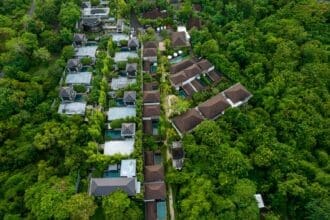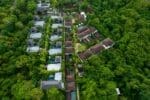In the world of real estate investing, numerous strategies exist, but few offer the powerful potential for rapid portfolio growth like the BRRRR method. The acronym, which stands for Buy, Rehab, Rent, Refinance, Repeat, is more than just a sequence of actions—it’s a cyclical system for wealth creation that allows investors to reinvest their initial capital over and over again.
For investors looking at European markets, the BRRRR strategy presents an exciting opportunity, but it also comes with specific challenges, particularly during the refinancing stage. In this guide, we will break down each step in detail, with a focus on the European context and the specific considerations you need to be aware of.
Content
What Exactly is BRRRR and Why is it So Effective?
At its core, BRRRR is a method of acquiring undervalued properties, increasing their value through improvements (forced appreciation), and then extracting the invested capital through refinancing to use for the next purchase. It is one of the most powerful real estate exit strategies because it allows you to build a portfolio with little to no personal capital left in the properties after the initial purchase.
Step 1: Buy – Finding the Right Property
The foundation of the entire strategy is the purchase. Unlike traditional investing, you are not just looking for a property; you are looking for a deal. The goal is to acquire an asset at a price significantly below its future, post-renovation value, known as the After Repair Value (ARV).
What to look for:
- Properties needing renovation: These are the properties other investors avoid—with outdated interiors, in need of structural improvements, or simply neglected.
- Undervalued markets: Look for regions or cities in Europe where the market has not yet peaked but has growth potential. For foreign investors, this could mean neighborhoods on the outskirts of major cities in Spain or smaller, developing resort towns in Greece.
- Bank-owned or distressed properties: These are often offered at lower prices but require a quick response and often a cash payment. Explore the possibility of finding property from banks in Spain.
Deal Analysis:
Before you buy, you must do the math precisely. To determine the potential, it’s crucial to calculate the future Return on Investment (ROI). A key principle is the “70% Rule”: You should not pay more than 70% of the property’s After Repair Value (ARV), minus the cost of repairs.
- Formula: Maximum Purchase Price = (ARV x 0.70) – Rehab Costs
Step 2: Rehab – Forcing the Appreciation
This is the stage where you create value. The renovation is not merely cosmetic; it must be strategic—aimed at increasing the rental price and, most importantly, the market valuation of the property. Learn more about renovating on a budget for a high return.
Key Principles:
- Focus on ROI: Concentrate on improvements with the highest return on investment—modernizing the kitchen and bathroom, replacing windows, and improving energy efficiency.
- Budgeting: Create a detailed renovation budget and add at least 15-20% for unforeseen expenses.
- Reliable Contractors: Finding good contractors abroad is a challenge. Use recommendations, check licenses, and always sign detailed contracts.
Step 3: Rent – Stabilizing the Asset
Once the renovation is complete, the goal is to quickly find a quality tenant. Why? Because the banks that will review your refinancing application want to see the property as a stable, income-generating asset, not a speculative project.
Strategy:
- Market Rent: Set a competitive yet realistic rent based on comparable properties in the area.
- Tenant Screening: Implement a rigorous screening process to minimize the risk of problems.
- Professional Management: For investors who do not live in the same country, hiring a company for maintaining a property remotely is almost essential.
Step 4: Refinance – The Key Stage for International Investors
This is the moment of truth and the biggest challenge. The goal is to execute a real estate refinance abroad, where the bank grants you a new loan based on the property’s new, higher market value. This process is called a cash-out refinance.
The Process:
- Property Appraisal: The bank will send an independent appraiser to determine the new market value (ARV).
- Loan Approval: Most banks in Europe will finance up to 70-80% of the new appraised value (Loan-to-Value – LTV).
- Capital Extraction: The new loan is first used to pay off the old one (if any) and all transaction costs. The remainder is your “cashed-out” capital, which you can use for the next investment.
Challenges in Europe (Spain, Greece):
- “Seasoning Period”: Many banks require that you have owned the property for a certain period (typically 6-12 months) before they will approve a cash-out refinance.
- Proof of Income: As a foreign investor, you will need to prove a stable income to the European bank. This can be more complex if your income originates from a country outside the bank’s jurisdiction (e.g., outside the EU/Eurozone).
- Conservative Appraisals: Banks in countries like Spain and Greece can be more conservative in their appraisals, which may reduce the amount of capital you can withdraw.
- Finding the Right Bank: Not all banks offer cash-out refinance on investment properties to foreigners. It requires thorough research, and working with a mortgage broker who specializes in international clients is highly recommended.
Step 5: Repeat – The Magic of Compounding Growth
With the extracted capital in hand, you are ready to start the process all over again. This is the beauty of the BRRRR strategy—it allows you to acquire a second, third, and fourth property by leveraging the power of forced appreciation and OPM (Other People’s Money) without investing new capital of your own each time.
Risk Analysis
The BRRRR strategy is powerful, but it is not without risk. A thorough assessment of risk in property investments is mandatory.
- Rehab Risk: Costs can exceed the budget.
- Market Risk: If the market declines, the new appraisal could be lower than expected. To track market trends, it is advisable to use official data, such as the Eurostat’s House Price Index.
- Refinance Risk: You may not get approved for a loan, or the terms could be unfavorable.
- Tenant Risk: Difficulties in finding tenants or issues with rent payments.
Conclusion: BRRRR as a Mindset
The BRRRR strategy is much more than an investment technique; it is an active business model. It demands in-depth knowledge, precise planning, project management, and a readiness to handle unexpected challenges. For investors who are willing to put in the necessary effort and navigate the specifics of refinancing property abroad, this method can be the key to building an international real estate portfolio with exceptional speed. Always proceed with caution, do your homework, and surround yourself with the right team of professionals.
You might also like:
- How to avoid scams when buying property in Dubai
- Mortgage for Foreigners in Europe: Spain, Greece & Italy Compared (2025)
- Investing in Dubai: Beyond the glamour – the real risks for your Palm apartment
This post is also available in: Български







